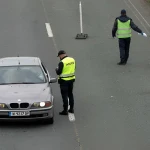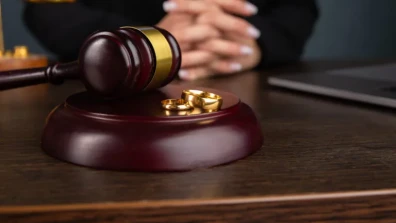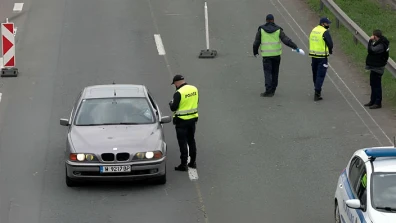Raw or uncut diamonds are the treasured gems of dreams and fantasies. They are a treasure hidden deep somewhere within the Earth. These raw and unpolished gems have captivated man with their attraction for ages. However, in a raw form, they give a look of cracked windshield. To know more about the similar outlook of a cracked windshield of car you can read the article How to Stop a Crack in Windshield From Spreading
Despite their appeal, it is, nevertheless, a difficult and challenging question to answer ‘how to identify a raw diamond’. It is the work of brave explorers and miners to discover them and forward them to the world.
Table of Contents
How Diamonds Look Like

Diamonds are the most sought-after gemstones around the world because of their sparkling attractiveness and extraordinary strength. In a world where imitations abound, it requires a keen eye, a spirit of adventure, and a soul of science to distinguish raw diamonds from other glittering imitations.
Captivating raw or uncut diamonds is an exciting journey to learn to reveal their magnificence. It is a relatively easy task to identify a cut diamond, but it is more challenging to recognize and identify a raw diamond. Flash and light refraction could help in disclosing the features of a cut diamond, but raw diamond lacks some method to identify unless a skillful and expert jeweler comes in.
Raw diamonds look like water-worn quartz pebbles, due to which many people can mistake the latter for the former. Several other gemstones may also be erroneously mistaken for raw diamonds by untrained individuals. Fortunately, various reliable techniques have been put in place to identify a raw diamond with certainty.
It is needless to mention that if a raw diamond is processed for finishing; it becomes very difficult to find out and trace the originality of a raw diamond. There is a meaningful difference in the finished diamond from a raw diamond in terms of shape, style, colors and transparency.
Discovery of Diamond
Arkansas is the only US State located in the south-central region of the southern United States where exists a diverse geography with many natural resources i.e. natural gas, rivers, forests, and gems in the crater of the Diamonds State Park, which is the only diamond producing sites in the world.
It is interesting to note that it is open for the public to visit, and search for diamonds and if they find it; the policy of ‘Finders, Keepers’ applies and the finders can keep the diamond with them. However, it is an obligation for them to report its failure which could drag them to face criminal charges.
Key Factors to Identify a Raw Diamond
In order to determine whether the stone in one’s possession is a diamond or not, one can start by examining it visually to eliminate the possibility of other gemstones. After that, one should conduct a more accurate assessment using either an electronic diamond tester or a piece of corundum.
Additionally, performing a gravity test to ascertain the stone's specific gravity can also help in identifying whether it is a diamond or not. Let’s discuss in bit detail all three types of tests that may be conducted at home or in the lab.
Simple Tests at Home to Identify a Raw Diamond
Raw diamonds can be identified by performing some simple tests at home. These tests may not establish with certainty the presence of a diamond but they certainly clarify at least some doubts about the reality or fakeness of a suspected diamond. These tests involve counting the sides of the crystal, scraping the suspected diamond with corundum, the use of a diamond tester, and fog test among others.
Counting the sides of the crystal
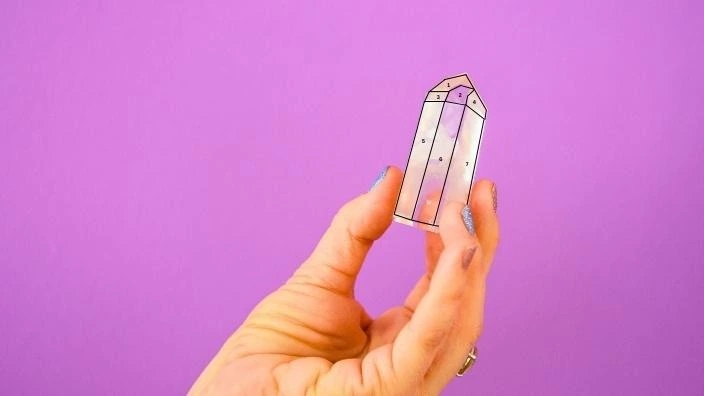
The first thing one can do to identify a diamond by counting its sides. The crystal’s upper surface can be examined and its sides can be counted. Typically, diamonds are cubic while gemstones like quartz are hexagonal. While focusing on the crystal’s pointed end, count the total number of sides it has. It will possibly be a diamond if the crystal under consideration has four sides.
On the contrary, having six sides’ means the crystal is quartz. This visual inspection will be helpful in eliminating the possibility of other stones if it does not confirm with certainty the presence of a diamond. If it happens so that the crystal has four sides, it is essential to use other ways to ascertain the identity of the suspected raw diamond.
Scraping the Crystal against a Piece of Corundum
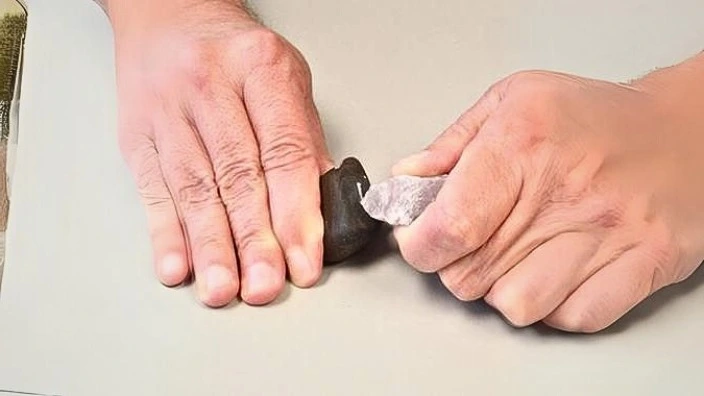
A suspected diamond cannot be tested by scratching it with glass which could cause damage to its properties. Many crystals and gemstones seem like diamonds that can be scratched on glass. Scratching a raw diamond with glass is, therefore, not advisable. The only hardness test that can help identify a diamond is by scratching the corundum.
Typically, Corundum including all rubies and sapphires, is a crystal that is a little softer than a diamond. It can, thus, be used to test the identity of a raw diamond. While conducting the test process, scratch the suspected diamond with a piece of corundum.
If a visible scratch appears on the corundum, then a crystal can be assumed to be a diamond. If no scratch appears on the body of the crystal is not a diamond rather it is some different mineral.
This testing technique is based on the method of Mohs Hardness Scale, which measures the hardness of crystals on a scientific basis. These numbers range from 1 to 10, where 1 signifies the softest substance while 10 denotes the hardest.
Diamonds are reported to have a hardness rating of 10 which makes them the hardest known material. Corundum, with a hardness rating of 9 on the Mohs scale, is a good means to identify a diamond if the latter leaves a visible scratch mark on the former.
Although diamonds are extremely hard materials, this feature alone is insufficient to hold that certain gem is a diamond or not as the gems named moissanite and cubic zirconium are also reported to have attributes of durability and resistance to scratches.
That is why it is not advisable to rely solely on scratch tests. It would be better to employ another method like a thermal conductivity test or get the suspected diamond checked by an expert professional.
Using a Diamond Tester to Identify a Raw Diamond
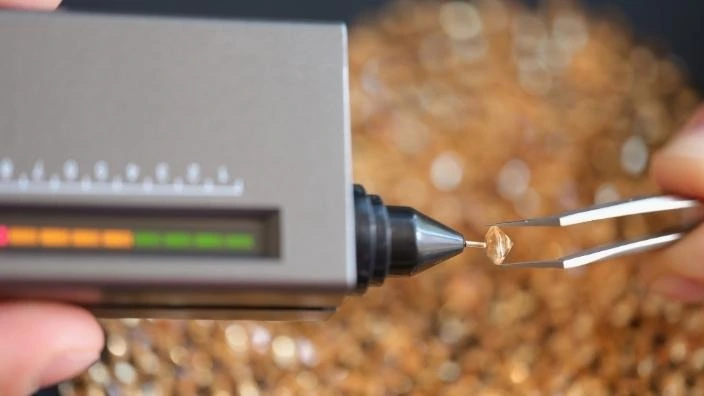
In order to identify a raw diamond, a diamond tester can also be used. Diamond testers work on the principle of electric or thermal conductivity to distinguish a diamond from another gemstone. Diamond testers can be acquired online or even can be used with the temporary help of the jeweler.
For the process of identification; it is recommended to place the diamond tester’s tip against the crystal. It appears to have contained its real properties if it illuminates or emits some sound. But if there is no response from the tester, the crystal is not a diamond but some other gem.
Here, it is worth mentioning that cheaper diamond testers may give wrong results. Therefore, it would be best to go for pricier models or read customer reviews prior to moving for the purchase of the item.
Conducting a Fog Test
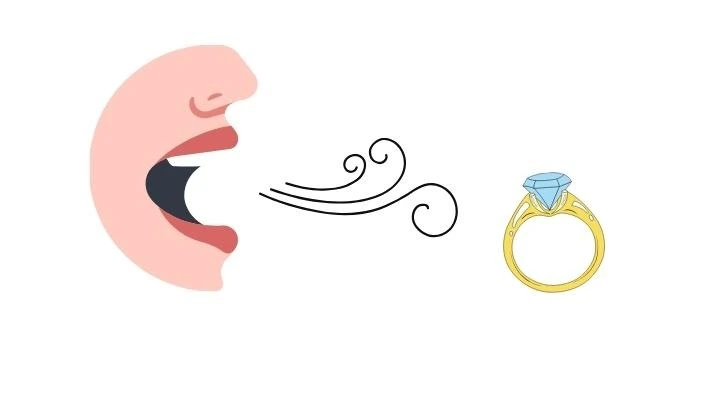
Fog test can be conducted by placing the crystal between two fingers and gently blowing a puff of air onto it. Since human breath contains warmth and moisture, a light mist should appear on the crystal surface. The crystal is likely a diamond if the fog disperses quickly.
But if it remains for a few seconds, there is a good chance that the crystal is not a real diamond rather it’s some other gem of similar nature. It is worth mentioning that real diamonds are efficient heat conductors, which leads the fog to dissolve or disperse quickly.
Performing UV Light Test
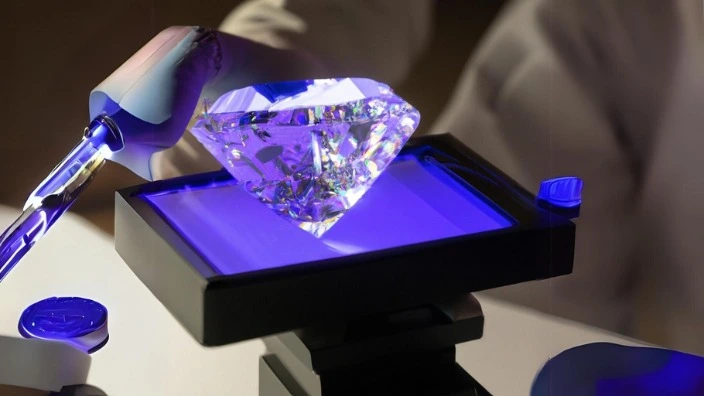
A UV light test may also be conducted to identify a raw diamond. A doubted diamond may be positioned beneath a UV light so that it can be examined through the response it offers. Many diamonds tend to produce a blue light, but such a response is not absolute and strict rather some other diamonds will show this response.
There is no hard and fast rule to decide the diamond by performing the test. Therefore, the presence of a glow will increase the chance that a crystal is a diamond, but if no glow appears, it cannot be assumed that the diamond is fake. It is thus better to seek advice from a jeweller or a professional who can use specialized testing equipment to provide more conclusive results.
Observe the Crystal’s Refractivity
The glittering of the diamonds appears as they can bend and refract light. It is through the diamond’s top surface, referred to as ‘the table’, that the light is reflected and diverted. While some stones like quartz, glass, and cubic zirconium also glitter, their refractive indexes are lower than diamonds due to which they will have less sparkle.
To proceed further, there are two other methods, which can be used to test a diamond’s refractivity. These are the ‘read-through’ effect and the ‘dot’ test.
- The ‘Read-Through’ Effect: It is a very simple test. It occurs in a way that you just place the flat side of the diamond down on a newspaper with amply bright light without any shadow. If you can read the letters on the paper through the crystal, it is forged. A genuine diamond will scatter the light making the letter blurry and hardly readable for you.
- The ‘Dot’ Test: Draw a small dot on a white paper and place it on a flat surface. Then, put the diamond’s flat side down on the dot. Now, look down through the diamond’s pointed end. The diamond is fake if there is a circular reflection inside the crystal. One will not be able to see the dot or its reflection because of the strong refractive properties of a real diamond.
These are some simple tests one can perform at home to identify a diamond. However, these tests only confirm some doubts about the diamond’s real identity. Other tests must be conducted to reveal whether a diamond is real or fake. In this aspect, the opinion of an old jeweler is very crucial but workable.
A Specific Gravity Test to Identify a Raw Diamond
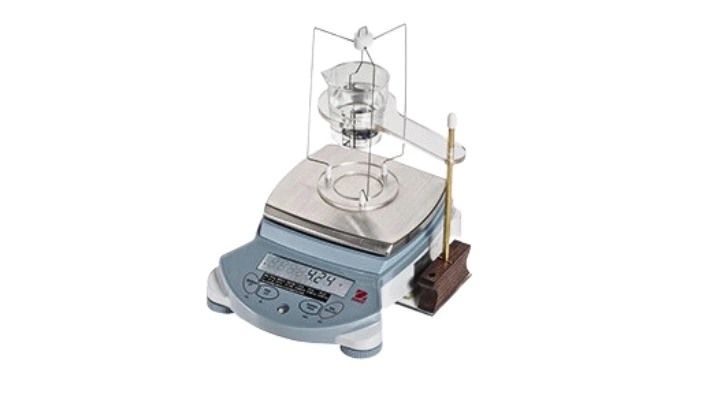
In the process of identifying a raw diamond, its specific gravity should be duly noted. The specific gravity is based on the density of a material based on which the identity of gemstones including diamonds may be confirmed. The specific gravity represents the density ratio of a material in relation to a pure liquid having a density of 1 g/ml.
A diamond’s specific gravity ranges from 3.5 to 3.53 g/ml. A diamond should not be mistaken for quartz whose specific gravity ranges from 2.6 to 2.7.
Weight the Crystal with Help of Electric Scale
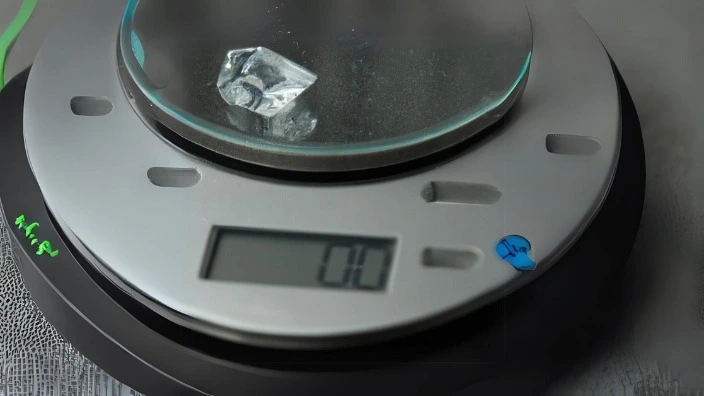
An electric scale can be used to confirm or disprove the presence of a real or suspected diamond. Diamond is measured in ‘carat’ which is equal to 200 milligrams. Based on their carat weight, gem-quality diamonds are rarely found. The likelihood of discovering a gem-quality 1-carat diamond is one in a million, a gem-quality 2-carat stone is one in five million, and a gem-quality 3-carat stone is one in fifteen million.
Moreover, the likelihood of discovering a diamond larger than 8 millimetres in size and more than 2 grams in weight is exceedingly rare because its probability is just one in a billion. An electric scale can be purchased online. Put the crystal on the surface of the scale and its weight will appear on the bar.
Filling up a Cup with Water & Zeroing the Scale
Fill up a plastic cup with enough water to completely submerge the crystal. Now, place the water-filled cup on the scale and press ‘tare’ so that the weight is set to zero. This step ensures that only the weight of the crystal will be measured and not the weight of the water or the cup.
In case, a plastic cup is unavailable, a plastic bowl or lightweight other home-used utensils can also be used. However, it must be made sure that the cup rests flat on the scale’s surface and not protruding past the edges.
Wrapping a Paper Clip and Holding it in the Air
To support the calculation of the specific gravity of crystal, it should be suspended in water so that it does not make any contact with the sides of the cup and it does not sink to the bottom.
Now take a paper clip and completely straighten it. After that, coil one end of the paper clip around the crystal tightly. Finally, hold the other end of the paper clip and lift the stone so that it is suspended in air.
Submerging the Crystal in Water and Recording its Weight
This is another method of using the paper clip, it works in the manner that you should carefully insert the crystal in the water-filled cup. One must ensure that the crystal does not touch the bottom or sides of the cup because it will lead to incorrect readings.
Now, note the reading given on the scale and write it down on the same sheet of paper where the weight of the crystal was recorded earlier.
Dividing the Crystal’s Weight by the Crystal’s Weight in Water
The density of the crystal can be determined by comparing its weight to its weight when suspended in water. Since diamonds’ density ranges from 3.5 to 3.53 g/cm3, the calculated value should fall between these ranges.
In a results, if the computed figure is lower than this range, the crystal is not a diamond. Remember! if the calculated density falls around this range, the crystal is likely to be a diamond. For example, if the crystal’s weight is 12.6 grams and 4.8 grams when suspended in water, the resulting density of 2.63 would be that of a quartz, not a diamond.
Determining the Specific Gravity range between 3.5 – 3.53 g/cm3
A calculated value within the range of 3.5 – 3.53 g/cm3 means the presence of a diamond. For example, if a crystal’s weight is 16.84 grams and 4.8 grams when suspended in water, the resulting density of 3.51 g/cm3, which would confirm that it is, indeed, a diamond. After reasonably ascertaining the presence of a diamond, it may also be appraised by an expert jeweler.
Exploring Advanced Testing Techniques to Identify a Raw Diamond
It is believed that the methods explained hereinbefore could definitely help you in identifying the real diamond but if it is still doubtful and undermined, some advanced testing techniques may be deployed to reach some conclusive findings. These include pinpointing the location of the diamond and using a 10x loupe or microscope.
Identifying the Raw Diamond Considering the Geological Location
Like other minerals, the existence of diamonds is closely related to particular geological features. Diamonds are typically found in close proximity to kimberlite pipes. It is because kimberlite pipes are the most stable and oldest portions of continents which is why they make the presence of diamonds around them highly probable.
Certainly, not every cluster of kimberlite pipe will contain diamonds around them, but there is an increase in the chances of diamond presence. Kimberlite contains almost 35 per cent olivine and no quartz or feldspar. It serves as the host rock for diamonds. Even if diamond deposits are nowhere near original kimberlite sources, their location can be traced back to kimberlite pipes.
It was well said by a renowned gemologist Kennan Young that diamonds can also be found in water. He further noted that they come from cratons, which is a usual location for diamonds. From these cratons, these invaluable crystals may be transported by streams to elsewhere. Thus, they are either found in streams themselves or ultimately end up in oceans.
Using a Microscope to Examine the Crystal
For a close examination of a crystal, a 10x loupe or a magnifying glass may be used to determine the properties of Clyster. A loupe is also a specialized type of magnifying glass which jewellers use to examine diamonds.
In order to confirm the identity of a diamond, jewellers inspect a diamond by placing it under a loupe to look for curved edges with tiny indented triangles. If they find these triangles, it confirms a diamond’s identity. Another sign of a genuine raw diamond is the appearance of a Vaseline layer coating it.
Examination of a Diamond by an Expert or Professional
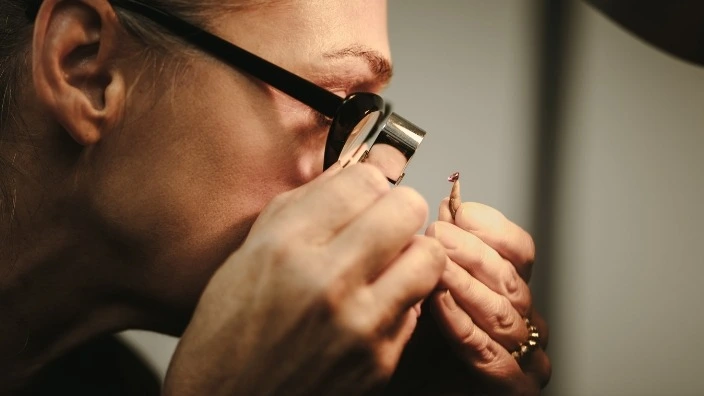
After conducting all these tests, if a person claims to have a diamond, it is still advised to get it examined and authenticated by a qualified and professional jeweler. An expert jeweler can also assist in obtaining a letter of authenticity or getting a specific report number from recognized diamond grading companies such as the Gemological Institute of America (GIA).
Professional evaluation is the most conclusive and authentic way to determine the identity of a raw diamond; failing which one cannot be absolute in understanding about the genuineness or falsity of the article he is keeping with him.
Conclusion
Raw diamonds are subtle treasures hidden deep inside the earth, capturing the imagination of humans and fueling their desire for beauty and brilliance. The phenomenon of raw diamonds is mysterious and upon an expedition into this world, one is reminded of the delicate skill, art, and science needed to reveal their true identity and essence.
In order to identify a raw diamond, a visual inspection is needed to examine its rough and glassy look, simple methods like the fog and refractivity tests are required to calculate its refractive index, specific gravity, and density, and advanced methods like using a 10x loupe or microscope and professional evaluation are necessary to ascertain its true identity.
Raw diamonds are a representation of enduring love and a testament to strength. The Earth’s hidden caverns have a lot more wonders that are waiting to be explored by fearless individuals.
In this article, we made every effort to include all the methods applicable to identify a raw diamond and by examining the diamond through the afore-referred methods; one can successfully conclude; however if still there is a mix-up; visit the professional jeweler/ expert is mandatory.
FREQUENTLY ASKED QUESTIONS:
What is the easiest way to identify a raw diamond?
Proceed with a scratch test in which rub your gem against corundum and see if there appears a scratch, you have got a real diamond or you can take the diamond to a professional jeweller.
What does a real raw diamond look like?
In terms of size, colour and shape, it can be in any way. Most of the time, they are found in irregular shapes i.e. octahedrons with rough texture. Likewise, these can either be transparent or opaque in white, yellow, brown or green colour.
How do I know if I found a diamond?
Apply hardness test to check the diamond by scratching with corundum. If corundum is left with a scratch you are having a real diamond in your hand.






